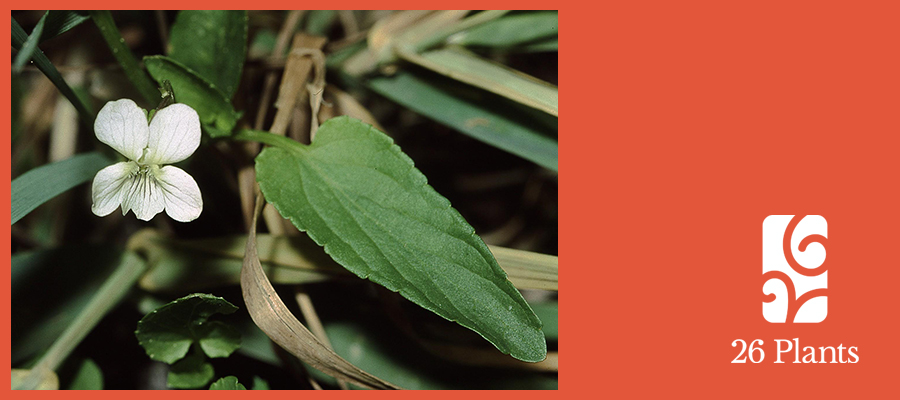Fen Violet
Viola persicifolia
Sinead Keegan

Turloch held
Éirne lies down. She has nowhere to run
from the tremors so lies with her women
beneath their cloaks and breathes seasons.
Becomes winter wet and holds the seeds
waiting
in closed marriage.
The turloch rises
and vanishes
down the slugaire, slipping through limestone
passages. Falls.
Across the Burren
from Claire to Fermanagh
Woodwalton, Wicken, Otmoor
waiting
for hooves to trample, graze, disturb.
Awakening seed, held firmly in hard earth at the edge
of a damp, winter-flooded hollow, waiting for drought
to demand a pale purple petal, a teaspoon leaf,
an insistent becoming. Veined milk and pearl.
Éirne lies down.
The fen violet (Viola persicifolia) is an unusual plant. Not just its rarity, but also its ability to defy sightings in a known habitat for as many as 60 years, only to suddenly reappear. This reappearance is unpredictable due to the plant’s dependence on numerous factors from the drying out of marshy ground to the seeds then being disturbed by animals, scrub clearance or even peat cutting in order to germinate.
The idea of these seeds waiting, unseen and unknown for decades sat in my own mind as I set to writing about this delicate looking, yet resilient flower. The fen violet is only rarely found in three locations in England, (all listed in the poem – Woodwalton, Wicken and Oxmoor), but is native to a number of sites across Ireland, especially around Loch Éirne in Fermanagh and along the low water lines of turlochs across much of the country.
Turlochs are a unique Irish wetland habitat: hollows in limestone heavy areas that fill with water in the winter to form lakes and then drain through a swallow hole (slugaire or estavelle) in the summer months until the ground is either only marshy or even dry. It is in these seemingly inhospitable conditions of flood and then dry, hard ground that the seeds of the fen violet wait to be disturbed, often by grazing animals like cattle or sheep, before germinating.
This quiet triumph of waiting and protest against habitat loss by mere existence seems to me to be a subversive act. This flower claims space and asserts its importance by returning on its own timetable, which calls to mind one of the stories of Loch Éirne’s origins.
A group of women, including Lady Éirne, were fleeing violence and lay down to give their bodies to the earth and so became the lake. Now, this lake gives life to a flower that is being squeezed out by farming practices and deliberate draining. It depends on the cycle of wet winter and dry summer, but this sequence has often been disrupted.
Many large fens and turlochs are now protected areas, giving some reprieve to the threatened species that call them home, but agriculture and residential areas continue to encroach, especially on smaller habitats that are difficult to protect individually. Although the fen violet has the ability to self-pollinate, which can help it to produce seeds in unfavourable conditions, and these seeds can wait many years for the right moment to germinate, this is likely not sufficient to ensure its survival.
Many organisations are researching ways to protect and encourage the re-emergence of this exacting but resilient plant. Projects like the Wildlife Trusts’ Great Fen Living Landscape project, which includes the fen violet site of Woodwalton, legislative protection from both the UK and Irish governments, and EU environmental policies recognise the importance of these delicate habitats and that we must take action to protect them and the species that call them home. As we take action to restore fens and turlochs, hopefully the patient fen violet can continue to carve a home for itself on the limestone shores of these vanishing lakes.
Image released into the public domain by Fornax
